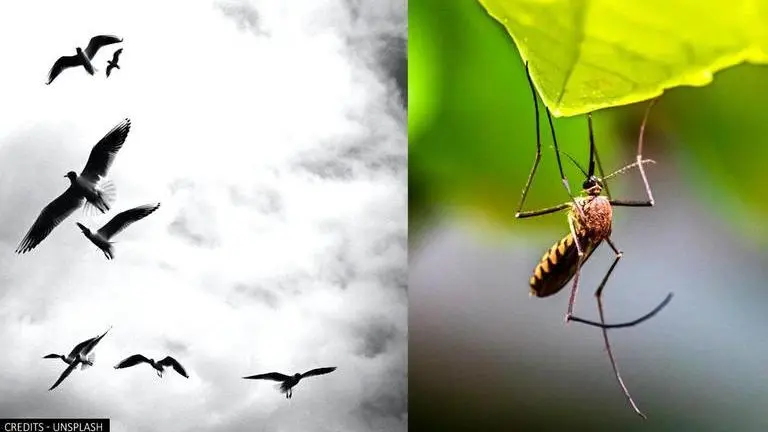Updated 13 September 2021 at 08:46 IST
Bird Malaria spreading across avian species via global hotspots, finds new study
During the 1800s and 1900s, avian malaria was one of the leading reasons for the loss of roughly one-third of the 55 identified Hawaiian honeycreeper birds
- Science News
- 3 min read

A recent study suggests that a kind of malaria is to be blamed for the deaths of bird species around the world. The research results were issued in the journal of "Global Ecology and Biogeography." A global team, led by Dr Nicholas Clark of The University of Queensland, has been working to figure out where and why the disease has been transmitted so quickly. Although these variants are not human-infectious, they are rapidly expanding among bird species across worldwide transmitting hubs.
Dr Clark stated that avian malaria has currently infected an average of approximately 13 and 14 per cent of all wild bird species around the world. This disease is caused by a group of blood parasites identified as haemosporidian parasites, and it is spread by blood-feeding insects like mosquitos, just as human malaria.
Malaria in avian species
After avian malaria was first discovered in Hawaii during the late 1800s and early 1900s, it was one of the leading reasons for the loss of roughly one-third of the 55 identified Hawaiian honeycreeper bird species. The team has discovered that these parasites are transmitted through hotspots throughout the planet. “The most significant hotspot was in the Sahara-Arabian region, with local hotspots in North America, Europe and Australia, depending on different parasite variants," Dr Clark added.
Several of these blood parasites are generating significant rates of infection in the songbirds of Australia which comprises silvereyes (Zosterops lateralis) and many kinds of honeyeaters. With almost 53,000 wild birds investigated in this case, the study team has gathered and examined stating that this is possibly the biggest data collection of avian malaria parasite transmissions in wild bird species till now.
Advertisement
In order to determine which aspects properly characterised the risk of contamination with avian malaria parasites, the team compiled infection information with remotely sensed environmental data, which can be considered as the climate or forest environments, and birdlife history information, like body composition and migratory patterns, into computational methods.
Statement of Another research group
Dr Konstans Wells, who oversees Swansea University's Biodiversity and Health Ecology research group, says that they are projecting which factors make wild birds more susceptible to avian malaria infection. This is important in order to understand infectious disease risks. He further added that infection risks for various bird species are not all the same as each bird species exhibits distinct features in its biological habitat and also shows how differently they are exposed to the insects who transmit the disease during breeding and migrating.
Advertisement
As per ANI, Dr Konstans explained, "Conditions that enable infection in different areas across the world are completely context-dependent. For example, long-distance migrating birds were more likely to be infected in some continents but less likely in others."
In Conclusion, Dr Konstans said as so many elements at action, there is no simple answer. But he assures that they will continue to investigate to figure out how to best safeguard the bird species of the world from this fatal illness.
(Image: Unsplash)
Published By : Anwesha Majumdar
Published On: 13 September 2021 at 08:46 IST
